There’s comfort in the familiar, a statement Bravely Default II takes dearly to heart. The Bravely Default series has never sought to reinvent the wheel, and there’s a place in the industry for some old-school charm. Yet, what’s familiar can also feel safe and boring. Bravely Default II often straddles this line, and where you’ll land all depends on what you’re looking for in your throwback JRPGs.
A tale we’ve all seen before.
The first Bravely Default was as direct nod to the original Final Fantasy games from the late 80s and early 90s, which was no surprise considering the game started out as a sequel to “Final Fantasy: The 4 Heroes of Light”. The concept of world-sustaining, elemental, capital-C “Crystals” was certainly nothing we hadn’t seen before, but in 2012 we didn’t have many old-school JRPGs quite up to Bravely Default’s standard.
Mix in the well thought-out remixing of Final Fantasy V’s Job system – where characters could learn a variety of different jobs and their associated abilities – alongside the inventive “Brave/Default” mechanic, and Bravely Default proved itself nostalgia-bait of the finest quality. Sure, the story didn’t exactly excite since many of its twists could be seen a mile out, but the cast was endearing, and the novel “Brave/Default” push-pull mechanic helped elevate the game above its more rote components. It was video game comfort food, and we had yet to be inundated with throwback JRPGs looking to recapture the genre’s former glory.
Now in 2021 we’re a bit spoiled for choice when it comes to quality turn-based JRPGs. Even Bravely Default’s direct sequel, Bravely Second: End Layer, was an okay follow-up, though its story was a mess of gibberish plot twists and cringeworthy dialogue. Producer Tomoya Asano would even go on to develop Octopath Traveler, another delightful trip down Nostalgia Road released back in 2018 on the Nintendo Switch. Hell, Nintendo’s handheld has become a welcome reservoir of old-school JRPG goodness: chuck a few bucks into the eShop and you’ll grab a few decent titles.
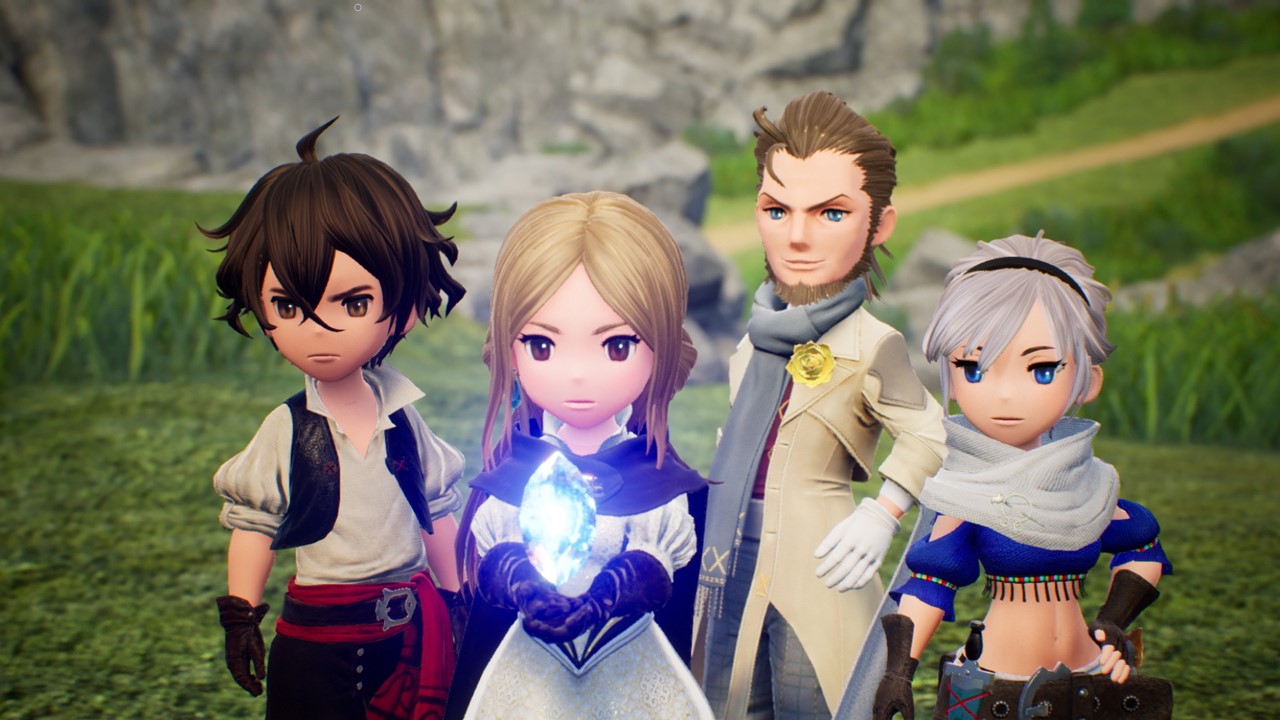
Bravely Default II firmly follows in its predecessor’s footsteps, for both better and for worse. The novelty of a proper turn-based JRPG has worn off a bit over the years, making a few of Bravely Default II’s older genre conventions more tedious than thrilling. The most obvious irritant is the story: the slavish dedication to 90’s JRPG tropes and clichés isn’t as endearing today as it was when Bravely Default released over eight years ago, though that’s not to say the story is outright bad.
Again, it all comes back to there being comfort in the familiar. The four eventual Heroes of Light – the amnesiac sailor Seth, driven princess Gloria, laid-back scholar Elvis, and chipper mercenary Adelle – all come together as a party rapidly with little conflict, and by and large they never evolve as characters. This probably would be more charming than annoying if Bravely Default II wasn’t yet another tale of four heroes seeking four crystals to stop a nihilistic force of darkness bent on – lemme check my notes – ah, right, ending the world and all of creation as we know it.
Bravely Default II firmly follows in its predecessor’s footsteps, for both better and for worse.
That said, the narrative is competently written and presented, the characters are likeable, and the English voice-acting is solid enough. The story in Bravely Default II is enjoyable at a surface level, but anyone with even a passing familiarity with the genre will know every single plot point and twist well in advance.
It doesn’t help that all of the side quests are fairly basic fetch or kill quests, though the few that do build on the world and characters are much appreciated. Otherwise, these are here to provide items and experience, which isn’t inherently terrible, just stale.
If that’s what you’re looking for in a throwback JRPG then you’ll be nonplussed by Bravely Default II’s unflinching dedication to retelling a story we’ve seen a thousand times before. If you’re like me and enjoy a health balance of reflection and evolution, well, you’re going to tune-out by the game’s back half cause you’ve seen it all before.
I do want to foot-stomp that this is only really an issue if you care about the plot, because let’s be honest with ourselves, that’s really not why most of us are here. Yeah, story is an important component with the JRPG genre, but in Bravely Default II the narrative merely serves as a vehicle carting players from one tense battle to another.
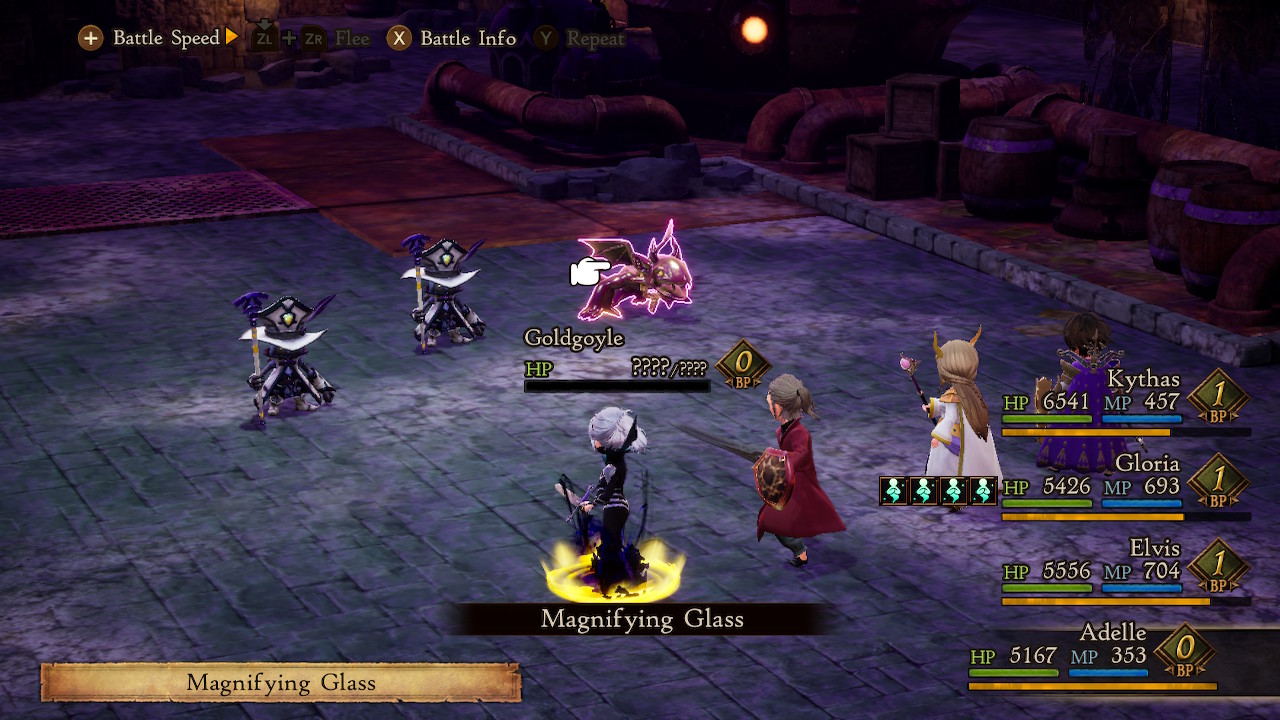
Bravely Default II’s combat hasn’t changed much, and that’s okay.
The combat and Job System are the true stars of the show in Bravely Default II. Not a whole lot has been altered since Bravely Default (at least nothing major), though the change from a round-based turn-order to a speed-based one is impactful enough to change the overall flow and flavor of battle.
Instead of queuing your entire party’s abilities at once then waiting for the round to resolve, you now have a little Final Fantasy ATB-esque bar below each of the four combatants that fills up between individual turns, and a character’s speed (among a few other wrinkles) will dictate how long it will take to fill up.
This has a giant impact on which Job combinations you bring into battle. To pivot real fast to better provide some context: any character can level-up any Job after it has been unlocked, and you can equip those Jobs as sub-Jobs to bring a variety of active abilities into battle. Additionally, any passive ability learned can be equipped regardless of what main Job and sub-Job a character is using (up to a certain limit, of course). This is generally how the Job system worked in the last two titles, but the change to attack order means Job roles and combinations feel more critical than ever.
A slow tank, such as the Shieldmaster, may not act often, but with the right passive abilities from both it and other learned Jobs you can speed that character’s turn up, turning them into a potent defensive powerhouse. Or, you can learn the Freelancer’s Body Slam, which deals damage based on the combined weight of all that character’s equipment, then equip it as your Shieldmaster’s sub-Job to absolutely body the opposition (pun totally intended). Throw in those passives that reduce the amount of time that character has to wait on their turn, and you’ll have yourself a personal meteor that’ll crater your foes.
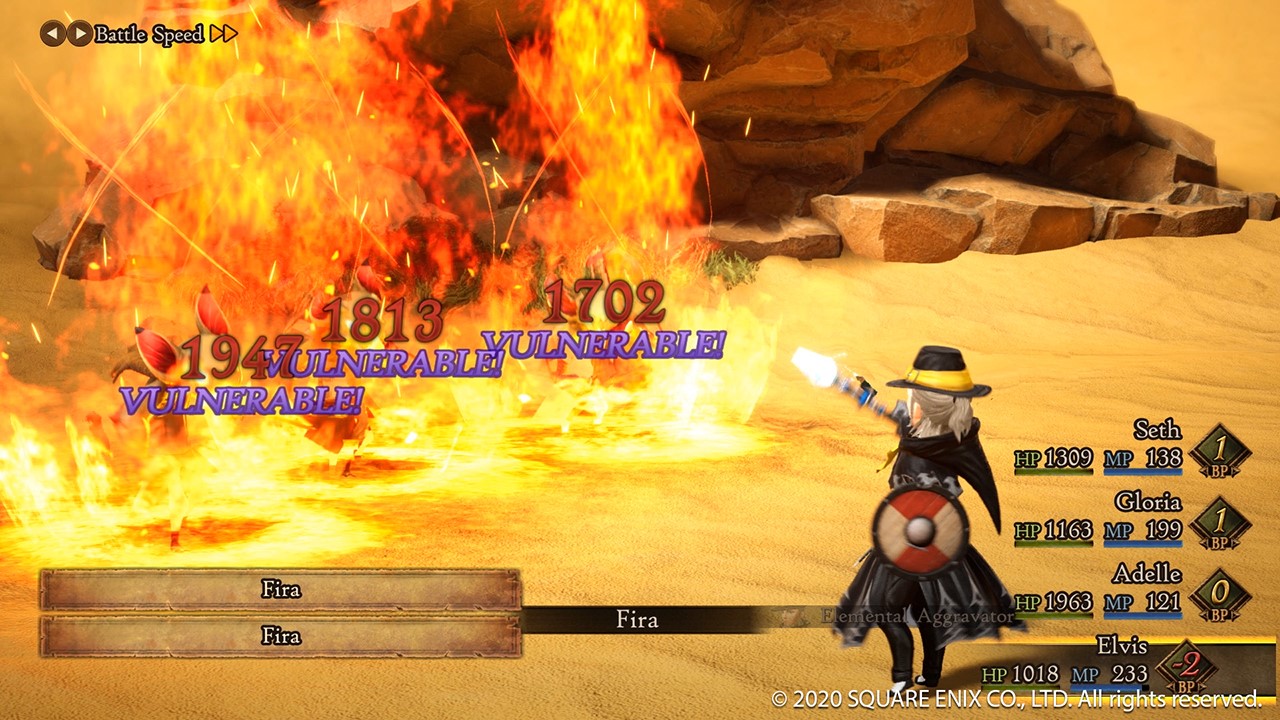
There’s nothing quite like finding the right combination of Jobs that’ll allow you to steamroll a previously tricky boss encounter. Running a Red Mage with a Black Mage sub-Job meant I could use Chainspell to double up on potent elemental barrages, leading to a blitz of massive damage. Then there are the weird combinations that don’t appear to compliment each other upon first glance, but turn out to be powerful in their own right, like a Salve-Maker/White Mage capable of sleepwalking as a healer.
The Job system is simply sublime, and a batch of end-game Job weapons that allow you to break Bravely Default II in new and creative ways are the cherries on top. If you’re willing to put in the time to level each and every Job you can easily pummel any boss into a figurative pulp, and finding the optimal match-ups is a joy on to itself.
The “Brave/Default” system the title is derived from remains largely unchanged. You’ll “Default” when you want to block, effectively banking your turn for later. You can “Brave” to burn those banked turns all at once, or you can go into a turn-debt and force that character to sit out until they reach 0 again. It’s a classic case of “don’t fix what isn’t broken,” and it’s a more worthy holdover from the previous titles.
The Job system in Bravely Default II is simply sublime.
Blend the change to turn-order with the robust Job system and the “Brave/Default” mechanic and you get an outstanding turn-based JRPG combat system. You can even increase the speed in which combat animations play out and can have characters repeat their last set of actions with the press of a couple buttons (much like the older games), which is a godsend considering just how much grinding you have to do in Bravely Default II.
Grinding is part and parcel of the JRPG experience, especially in older titles where you’d sit in either a dungeon or on the world map picking fights to raise your level high enough for the next dungeon. In this regard, Bravely Default II falters somewhat. In the first half of the game you’re capable of keeping pace with the story and able to clear upcoming dungeons so long as you grab a level or two in each area you visit. You’re still grinding to keep up, but it’s a process woven intimately into the flow and pace of the narrative.
Then the back half hits and Bravely Default II goes all-in on the old-school approach. It wasn’t uncommon to hit multiple walls towards the end of classic JRPGs, necessitating a few hours of running around triggering random battles to catch back up. It was tedious two-plus decades ago, and it’s tedious today. You’ll spend the majority of the second half of the game hunting down optimal grinding locations, which throws the once snappy pacing completely off the rails.
It’s not the worst grind ever, since Bravely Default II does offer orbs within the late-game trials that help you power-level your Jobs. Still, little tweaks such as allowing you to level sub-Jobs from combat would have been much appreciated, and would have made the late-game grind less disruptive and boring overall.

The Art and Music in Bravely Default II are uniformly excellent.
If there are two aspects of Bravely Default II that don’t disappoint they’re the music and art design. Sound Horizon returned to score the soundtrack, and it’s full of bangers. There’s a better variety of boss music here than in the first game, and they are easily the best tracks in the OST. The entire score is a delight to listen to though, one that will easily make it’s way into my Spotify playlist when Square Enix inevitably adds it to their library.
The art design in Bravely Default II has been handled by a pair of new artists to the franchise, Hajime Onuma and Naoki Ikushima, who have both done a great job of capturing Bravely Default’s Akihiko Yoshida’s original aesthetic whilst providing their own stamp on the franchise. The watercolor backdrops for each city are stunningly detailed for their relative simplicity, harkening back to older JRPGs like Final Fantasy IX.
Creature designs are all pretty solid, even if the majority are palette-swaps, and the bosses each visually embody the Job crystal they wield. The world map itself and some of the environments fall a little flat, but they’re minor faults amidst an otherwise excellent suite of artistic design and creativity.
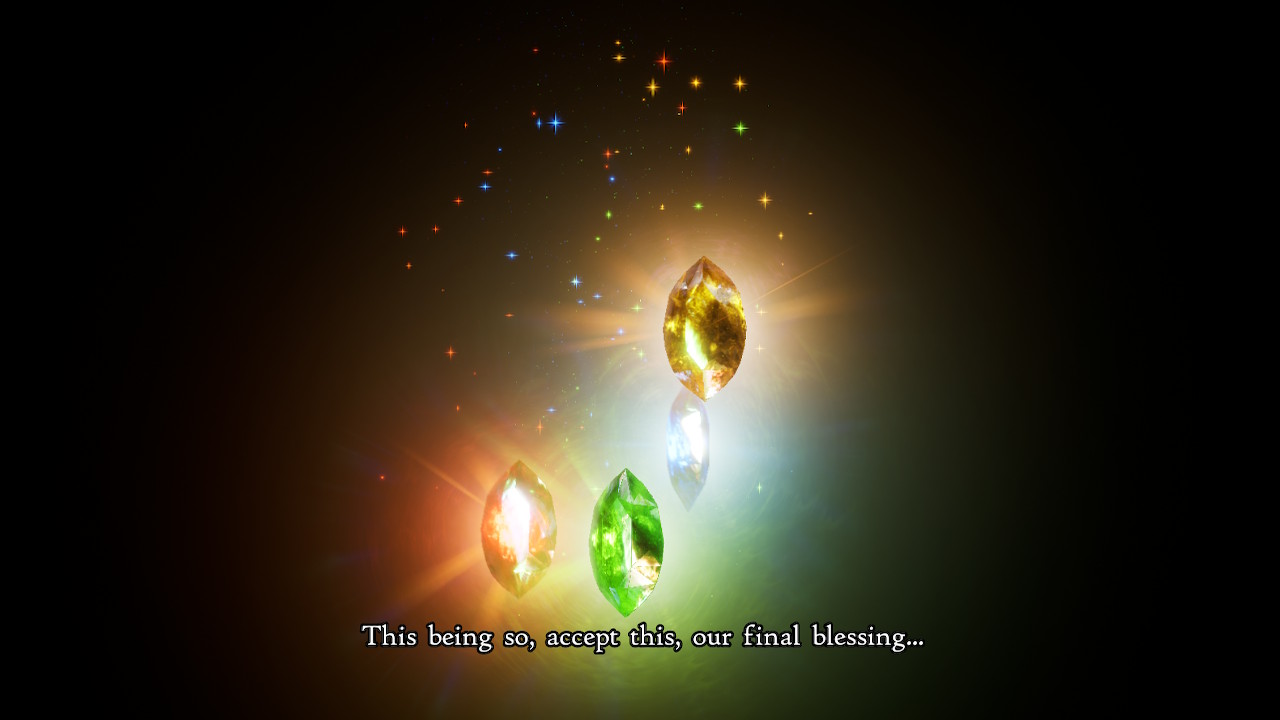
The Verdict.
Bravely Default II is a pleasant throwback to an era when JRPGs weren’t all trying to be action games. Its turn-based combat continues to excite, despite not evolving all that much since its predecessor launched over eight years ago. The story is too nostalgic for its own good – relying heavily on well-worn clichés and plot twists any JRPG enthusiast will recognize – but it’s competent enough to not drag the entire experience down.
Bravely Default II doesn’t do all that much to differentiate itself from the games that came before it. How you’ll feel about that will depend on what you want out of the game: do you want something that is familiar and comforting, or a title that innovates on a decades-old formula? If you’re here for the former you’ll absolutely enjoy your time with Bravely Default II, even if some of its failings start to grate on you. If you wanted the latter then the excellent combat, art, and music will help you overlook Bravely Default II’s otherwise tired tale.


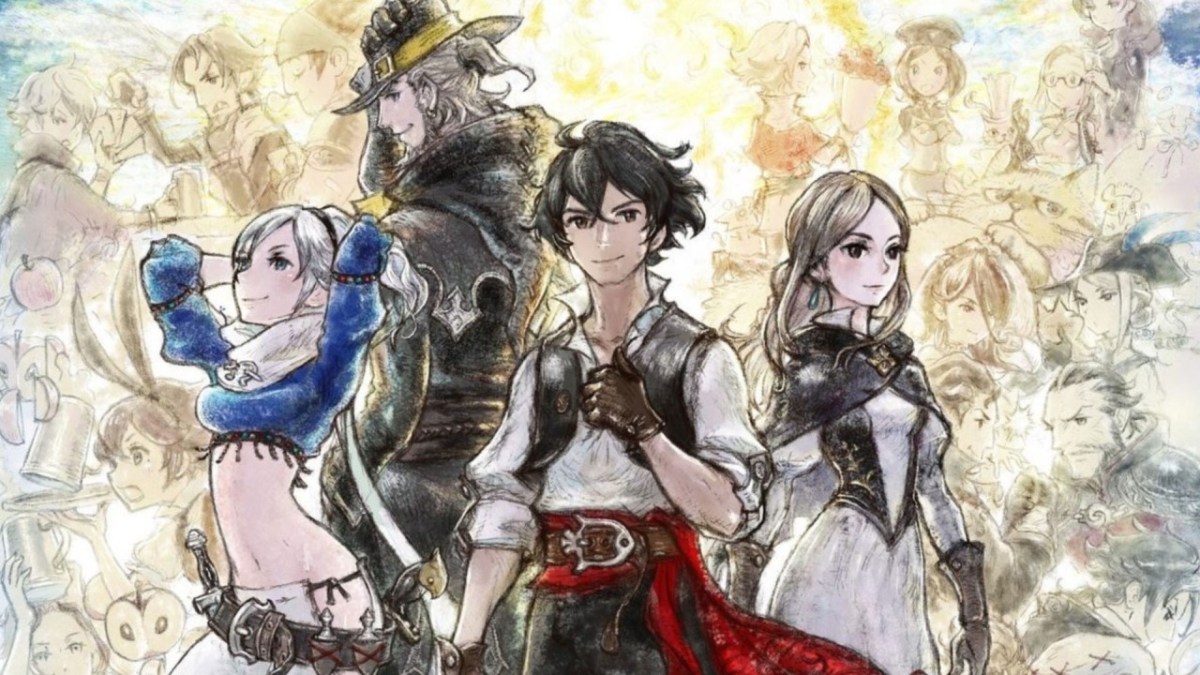








Published: Mar 24, 2021 06:55 pm